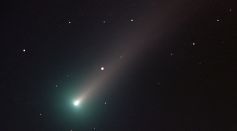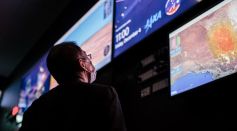SPACE
NASA’s TESS Captures Giant Active Comet Moving Farther Away From the Sun

Elon Musk Troubled by Looming SpaceX Bankruptcy Due to Lack of Starship Engine Progress

NASA Investigates Suspicious Bumps in Atmosphere Above North Pole After 2-Year Delay

NASA Wants People to Help Them Put a Nuclear Power Plant on the Moon by 2030; Here’s How

NASA ISS Spacewalk Delayed: High-Speed Space Junk Blamed Over Abrupt Delay

SpaceX to Launch Starlink Satellites Amid Space Debris Threat From Russia's Anti-Satellite Missile Test
Sun a 'Surprising Source' of Unexplained Water on Earth: What is Solar Wind Theory?
How Do Astronauts Sleep, Shower, Live in International Space Station (ISS)? [Explainer]

NASA James Webb Space Telescope is Finally Back on Track in Preparation For December Launch

C/2021 A1 Leonard Comet Will Make an Exclusive Appearance in December Before Perihelion Passage in January 2022
Last and Only Total Solar Eclipse of 2021: Why It Happens Weeks Before, After Lunar Eclipse
Mars InSight Lander Finds Volcanic Activity 200 Meters Below Red Planet Surface

Japan's Space Agency Join Forces With 30 Companies to Develop Reusable Rockets to Slash Costs By Over 70%
Plastic Waste-Powered Rocket Engine Successfully Tested; Use of Nuclear Fusion Tech Could Reduce Travel Time to Mars in Half
Most Popular

Can We Bring Back Extinct Animals? How De-Extinction Science and Technology Work

Why Do Stars Explode? Supernova Formation and the Final Stage of a Star Lifecycle

The Air Pollution Climate Link: What Environmental Science Reveals About Our Changing Planet

Extreme Heatwaves Explained: What Extreme Heat Science Reveals About Our Changing Climate




